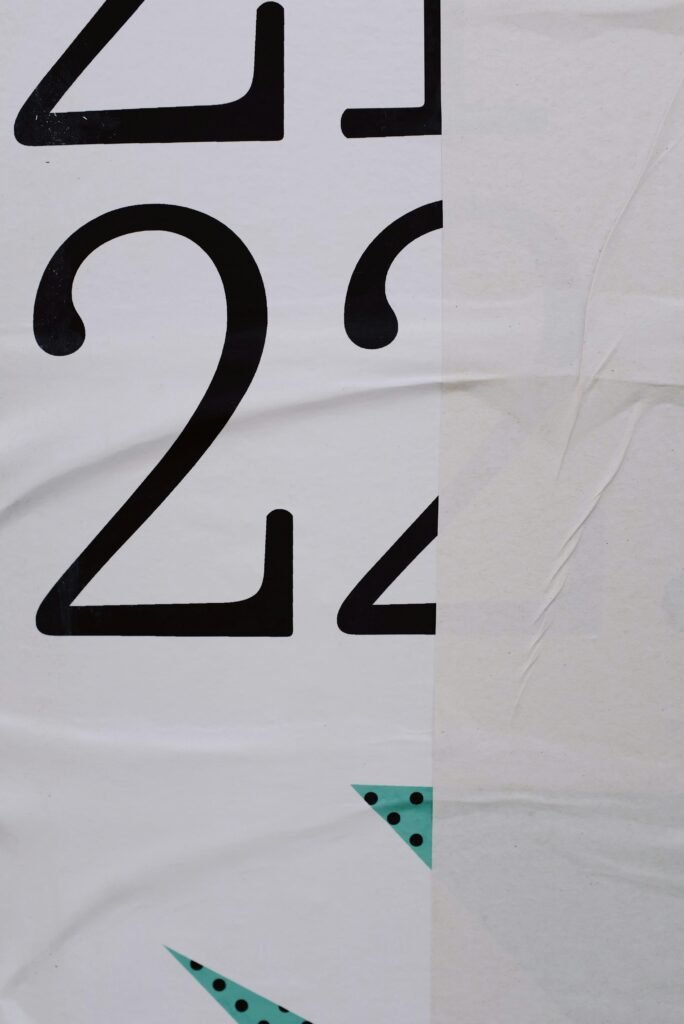Have you ever found yourself standing in front of a makeup aisle, overwhelmed by the endless options and unsure which shade will suit your skin best? Well, worry no more! In this article, we will explore the fascinating world of undertones and how understanding them can help you make the perfect makeup selection. Discover simple yet effective ways to determine your skin’s undertone, whether it be warm, cool, or neutral, and say goodbye to the guesswork forever. Get ready to achieve that flawless, natural-looking complexion with confidence!

Observing Vein Color
Check the color of your veins on your wrist
When it comes to determining your skin’s undertone, one of the easiest ways is to observe the color of your veins on your wrist. Gently roll up your sleeves and take a look at the veins visible on the underside of your wrist.
Determine if your veins appear blue or green
If your veins appear more blue, then you likely have cool undertones. On the other hand, if your veins appear more green, then you likely have warm undertones. Don’t worry if you can’t definitively determine the color of your veins, as you may have a mix of both blue and green veins.
Consider a mix of both blue and green veins
In some cases, you may observe a mix of both blue and green veins on your wrist. This could indicate that you have neutral undertones. Neutral undertones mean that your skin can adapt to both warm and cool shades, giving you more flexibility when it comes to choosing makeup colors.
Analyzing Jewelry Preferences
Look at the jewelry that complements your skin tone
Another helpful way to determine your undertone is to consider the type of jewelry that complements your skin tone. Examine both gold and silver jewelry against your skin, and take note of which one enhances your complexion.
Determine if you look best in silver or gold jewelry
If silver jewelry tends to make your skin glow, then you likely have cool undertones. On the other hand, if gold jewelry brings warmth and radiance to your face, then you likely have warm undertones. Remember, this is just an additional clue to help you determine your undertone, and it’s important to consider multiple factors.
Consider if you prefer rose gold or copper jewelry
In addition to silver and gold, you can also try on rose gold or copper jewelry to further analyze your undertone. Rose gold tends to complement both warm and neutral undertones, whereas copper can enhance warm undertones. By paying attention to the way these metals interact with your skin, you can gain insights into your undertone.
Examining Sunburn Behavior
Observe how your skin reacts to sun exposure
One way to determine your undertone is to observe how your skin reacts to sun exposure. Pay attention to how your skin behaves in the sun and how it changes color.
Determine if your skin burns easily and rarely tans
If your skin tends to burn easily and rarely tans, then you likely have cool undertones. Cool undertones are often more prone to sunburn and have difficulty achieving a tan. This is because the skin’s melanin production is lower in cool-toned individuals.
Notice if your skin burns then gradually tans
If your skin initially burns but eventually acquires a tan, then you likely have warm undertones. Warm undertones have a higher melanin production, which allows the skin to tan more easily. However, it’s important to remember to practice proper sun protection regardless of your undertone.
Assessing Natural Hair Color
Consider the natural color of your hair
Your natural hair color can provide valuable clues about your undertone. Take a moment to consider the shade and undertones of your hair.
Determine if your hair has warm or cool tones
If you have hair with warm undertones such as red, strawberry blonde, or golden brown, then you likely have warm undertones in your skin as well. On the other hand, if your hair has cool undertones such as ash blonde, platinum, or cool brown, then you likely have cool undertones.
Think about if you have red or strawberry blonde hair
Red or strawberry blonde hair is often associated with warm undertones, as these hair colors have warm, reddish pigments. If this describes your hair color, it’s a strong indicator that you have warm undertones in your skin as well.

Trying on Different Clothing Colors
Experiment with different clothing colors
Another way to determine your undertone is to experiment with different clothing colors and observe their impact on your complexion.
Notice if certain shades enhance or wash out your complexion
Wear clothing in various colors, such as warm tones like reds, oranges, and yellows, as well as cool tones like blues, purples, and greens. Take note of how each color makes your skin appear.
Consider if you look best in warm or cool colors
If warm tones like reds and yellows make your skin look radiant and vibrant, then you likely have warm undertones. Cool tones like blues and greens, on the other hand, tend to enhance cool undertones. Pay attention to which color family makes your complexion look its best.
Using a White vs. Off-White Test
Hold a white and off-white fabric against your face
To further determine your undertone, conduct a white vs. off-white test. Hold a piece of white fabric and an off-white fabric against your face, ideally in natural light.
Determine if your skin appears brighter and healthier with either shade
If your skin appears brighter, healthier, and more radiant next to the white fabric, then you likely have cool undertones. On the other hand, if the off-white fabric makes your skin glow and look vibrant, then you likely have warm undertones.
Consider if your skin looks dull or grayish with either shade
If either shade makes your skin look dull, ashen, or grayish, it may indicate that you have neutral undertones. Neutral undertones mean that your skin doesn’t lean strongly towards warm or cool tones and can work well with a wider range of colors.

Analyzing Foundation Shade Matches
Test different foundation shades on your skin
When selecting foundation, it’s essential to find a shade that matches your undertone. Test out different foundation shades on your skin to determine which ones work best.
Determine if shades with yellow or pink undertones complement you
If foundation shades with yellow undertones blend seamlessly into your skin, then you likely have warm undertones. On the other hand, if shades with pink undertones provide a more natural match, then you likely have cool undertones. Pay attention to how the different shades interact with your complexion.
Consider if neutral shades or deeper tones suit your skin
If you find that neutral shades or deeper tones blend well with your skin without looking too warm or too cool, then you likely have neutral undertones. Neutral undertones offer a versatile range of options when it comes to foundation selection.
Consulting a Color Wheel
Refer to a color wheel to understand complementary colors
Using a color wheel can be a helpful tool in understanding complementary colors for your undertone.
Determine if warm or cool undertones match your skin best
Look for colors on the color wheel that are opposite to your undertone. If warm colors like oranges and yellows complement your complexion, then you likely have cool undertones. On the other hand, if cool colors like blues and purples enhance your skin, then you likely have warm undertones.
Consider how different hues can affect your complexion
The color wheel can also help you experiment with different hues within your undertone. For warm undertones, explore warmer hues like coral, peach, and bronze. For cool undertones, explore cooler hues like lavender, mauve, and silver. By understanding the color wheel, you can make more informed choices when it comes to selecting makeup colors.
Getting a Professional Opinion
Visit a makeup artist or beauty consultant
If you’re still unsure about your undertone, consider visiting a makeup artist or beauty consultant for a professional opinion. These experts have experience in assessing undertones and can provide personalized advice.
Ask for their expertise in determining your undertone
Makeup artists and beauty consultants can analyze your skin and provide valuable insights into your undertone. They can consider multiple factors such as your vein color, jewelry preferences, and reaction to sun exposure to help you determine your undertone accurately.
Consider professional makeup matching services
Many makeup brands offer professional makeup matching services. These services utilize technology to analyze your skin and provide personalized recommendations for foundation shades, blushes, and lip colors that match your undertone. Taking advantage of these tools can greatly simplify the process of finding makeup that complements your skin.
Taking Advantage of Online Tools
Utilize online quizzes or apps to determine your undertone
In today’s digital age, there are numerous online quizzes and apps available that can help determine your undertone. These quizzes often ask questions about your skin’s characteristics, such as how it reacts to the sun or which colors complement your complexion.
Answer questions about your skin’s characteristics and preferences
The quizzes and apps may ask you to answer questions about your skin’s reaction to the sun, the appearance of your veins, and your jewelry preferences. By answering these questions honestly, you can receive a more accurate assessment of your undertone.
Receive personalized recommendations for makeup selection
Once you have completed the online quiz or app, you will typically receive personalized recommendations for makeup selection. These recommendations are based on your undertone and can guide you in choosing colors that will enhance your complexion.
Determining your skin’s undertone can seem complex, but by observing your vein color, examining jewelry preferences, analyzing sunburn behavior, assessing natural hair color, trying on different clothing colors, conducting white vs. off-white tests, analyzing foundation shade matches, referring to a color wheel, consulting professionals, and using online tools, you can gain a better understanding of your undertone. Armed with this knowledge, you can confidently select makeup that complements your skin and enhances your natural beauty.

Irina Coz, a passionate advocate for inclusive beauty, founded this celebrated blog to honor every skin tone. With a background in dermatology and cultural studies, Coz expertly blends scientific insight with a deep understanding of diverse beauty traditions, creating a space where every race’s beauty is acknowledged and celebrated.

